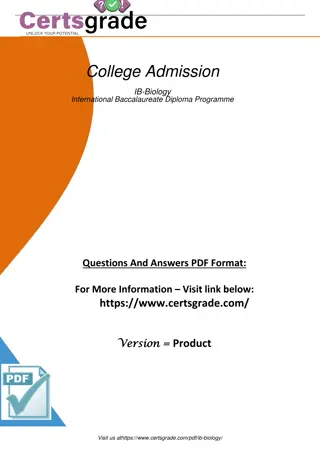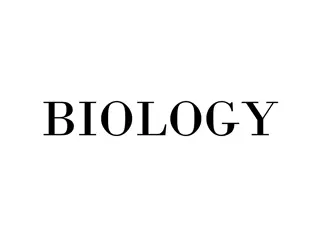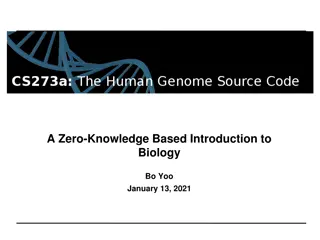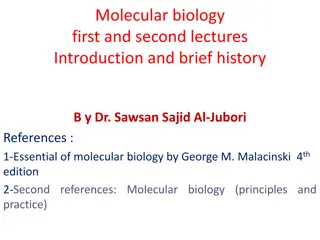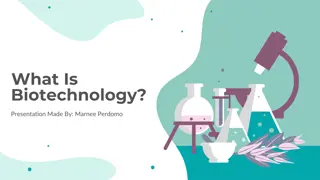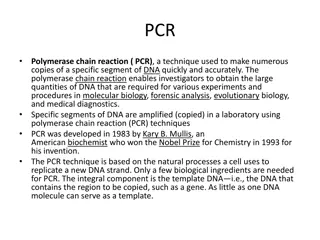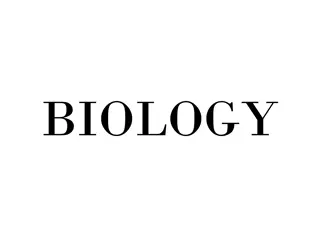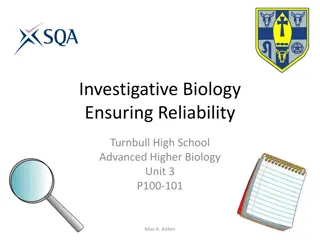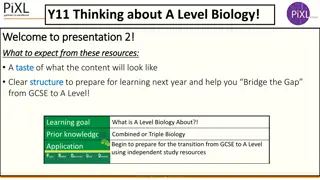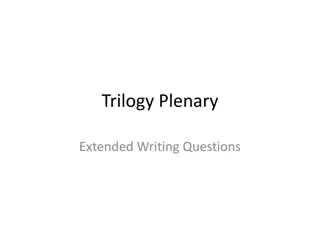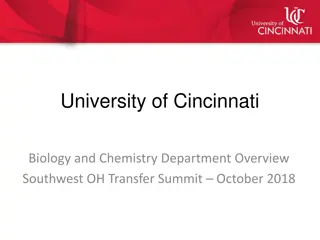Department of biology
The present continuous tense, also known as the present progressive tense, is used to describe ongoing actions or events happening in the present. It is formed by using the present tense of the verb "to be" followed by the -ing form of the main verb. Learn about forming positive, negative, and question structures, along with rules for adding -ing to different verb forms.
Download Presentation

Please find below an Image/Link to download the presentation.
The content on the website is provided AS IS for your information and personal use only. It may not be sold, licensed, or shared on other websites without obtaining consent from the author. Download presentation by click this link. If you encounter any issues during the download, it is possible that the publisher has removed the file from their server.
E N D
Presentation Transcript
Department of biology ENGLISH 1 stage By RAQIB ABBAS
present continuous tense The present continuous tense, also known as the present progressive tense, is used to describe an ongoing action or event that are happening in the present. It is formed using the present tense of the verb "to be" (am, is, are) followed by the -ing form of the main verb. examples: I am studying for my exams. She is working late tonight. They are playing soccer now I am studying for my exam. They are building a new house. We are waiting for the bus. The students are learning about grammar. The company is expanding rapidly. It is getting dark outside.
Negative The negative form of the present continuous tense is used to describe actions that are not happening at the moment of speaking EX : The formula is: Subject + am/is/are + not + verb(-ing) I am not studying right now. You are not listening to me. He is not working today. She is not coming to the party. It is not raining at the moment. We are not going to the movie tonight. They are not playing soccer today. I am not watching TV right now The cat is not playing with its toy
Question The question form of the present continuous tense is used to inquire about actions that are currently happening, ongoing situations, or future arrangements. It is formed by inverting the subject and the form of the verb "to be," placing the auxiliary verb before the subject The general structure for forming questions in the present continuous is: Am/Is/Are + subject + verb(-ing) + (optional complement) + ? examples Are you watching the new series on Netflix? Is he eating at the cafeteria today? Is she coming with us to the movies tonight? Is it raining outside right now? Are we meeting them at 7 PM? Are they playing soccer in the park? Are the children sleeping in their room? Is your brother working on his project this weekend? Are your parents traveling to Europe this summer?
How do we add ing 1. For verbs ending in "e," drop the "e" and add "ing." Example: Dance Dancing Drive Driving 2. the verb that ends with a consonant-vowel-consonant pattern, double the final consonant before adding "ing." Example: Run Running Swim Swimming If a two-syllable verb ends in a consonant + vowel + consonant, we do not double the final consonant when the stress is on the first syllable. happen . happening enter ..entering offer offering 3. For verbs ending in "ie," change the "ie" to "y" before adding "ing." Example: Lie Lying Die Dying But, we do not double the final consonant when the verb ends in W, X or Y or when the final syllable is not emphasized. Infinitive ING form fix . fixing enjoy . enjoying snow .. Snowing
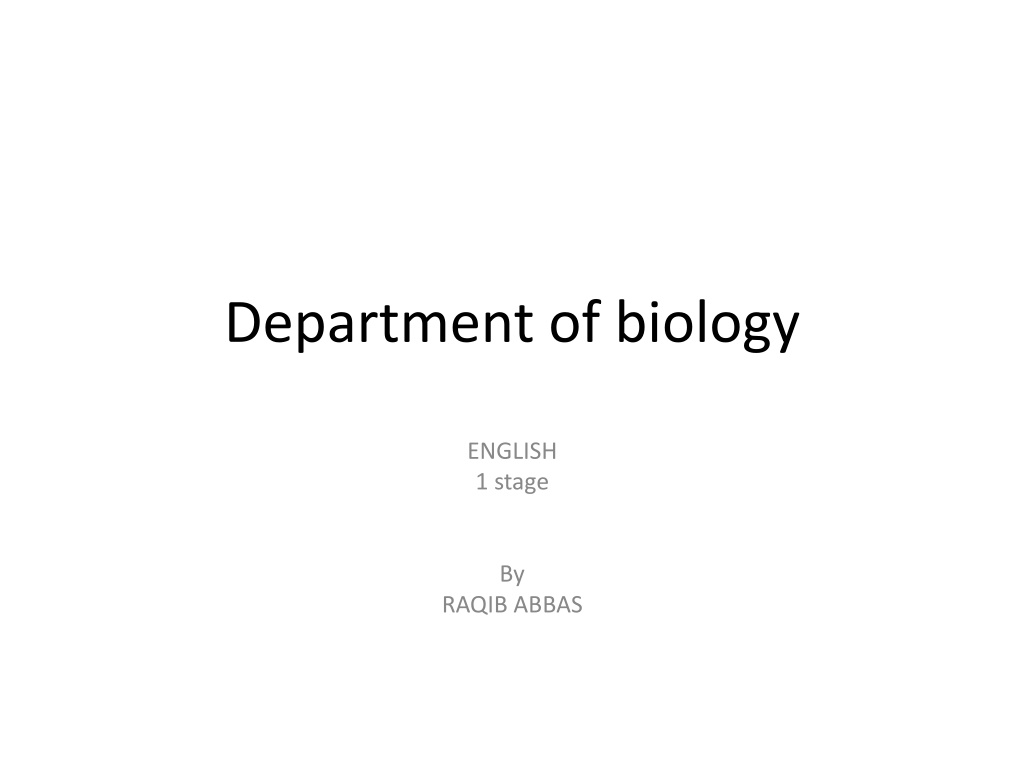

![❤[READ]❤ Cosmic Biology: How Life Could Evolve on Other Worlds (Springer Praxis](/thumb/21556/read-cosmic-biology-how-life-could-evolve-on-other-worlds-springer-praxis.jpg)

